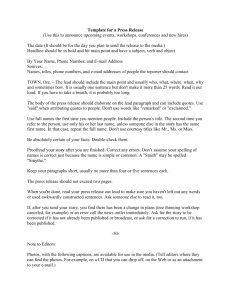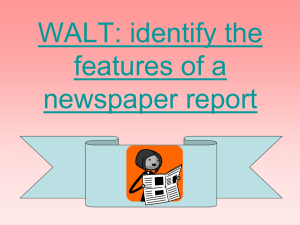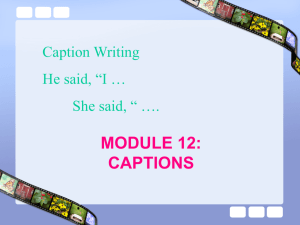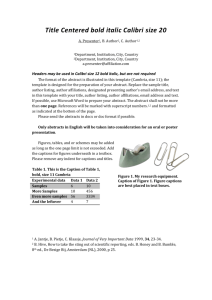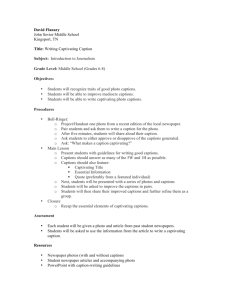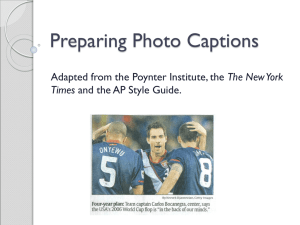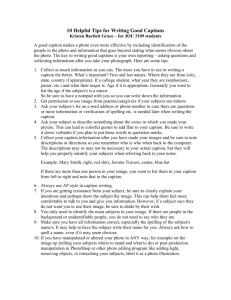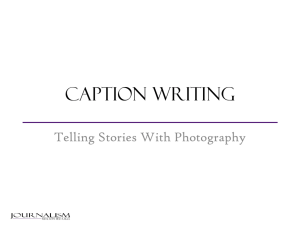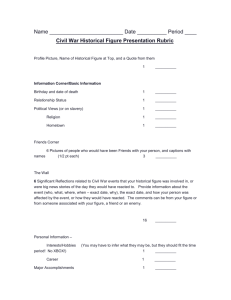Writing Captions - Lifetouch Yearbooks
advertisement
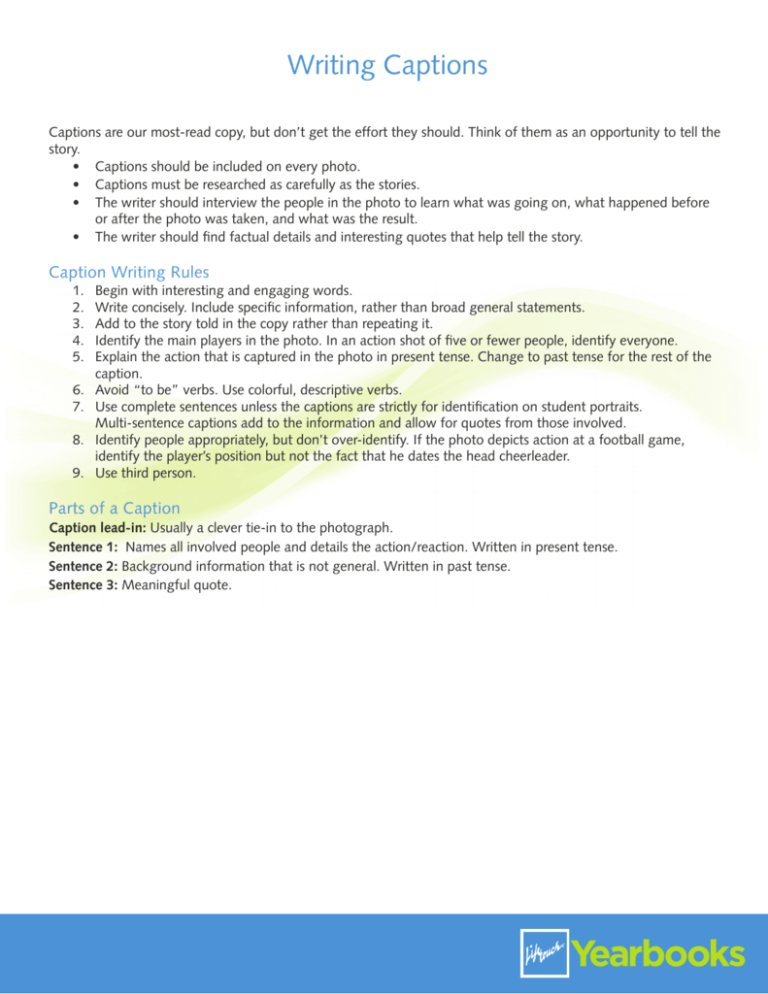
Writing Captions Captions are our most-read copy, but don’t get the effort they should. Think of them as an opportunity to tell the story. • Captions should be included on every photo. • Captions must be researched as carefully as the stories. • The writer should interview the people in the photo to learn what was going on, what happened before or after the photo was taken, and what was the result. • The writer should find factual details and interesting quotes that help tell the story. Caption Writing Rules 1. 2. 3. 4. 5. 6. 7. 8. 9. Begin with interesting and engaging words. Write concisely. Include specific information, rather than broad general statements. Add to the story told in the copy rather than repeating it. Identify the main players in the photo. In an action shot of five or fewer people, identify everyone. Explain the action that is captured in the photo in present tense. Change to past tense for the rest of the caption. Avoid “to be” verbs. Use colorful, descriptive verbs. Use complete sentences unless the captions are strictly for identification on student portraits. Multi-sentence captions add to the information and allow for quotes from those involved. Identify people appropriately, but don’t over-identify. If the photo depicts action at a football game, identify the player’s position but not the fact that he dates the head cheerleader. Use third person. Parts of a Caption Caption lead-in: Usually a clever tie-in to the photograph. Sentence 1: Names all involved people and details the action/reaction. Written in present tense. Sentence 2: Background information that is not general. Written in past tense. Sentence 3: Meaningful quote.

